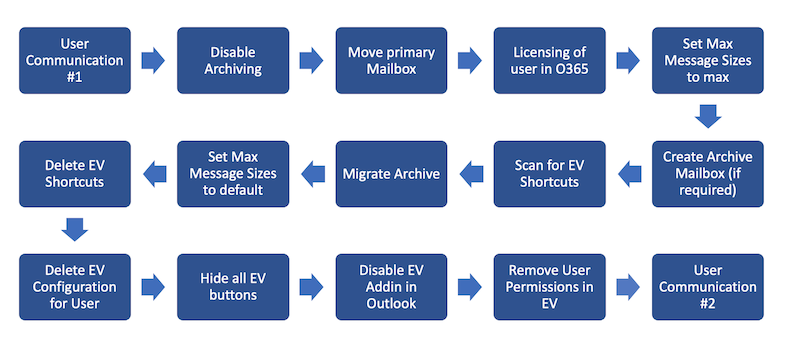Scalable Migrations To Office 365, But At What Cost?
It's far easier to scale when your architecture is cloud-native. On-premise scaling is very costly to customers.
We’ve spent decades working with all types of organizations, with all different sizes of migration, with all sorts of ...
We’ve spent decades working with all types of organizations, with all different sizes of migration, with all sorts of environmental challenges. You would think we’ve seen it all, but we still strongly believe that every project is unique with potential challenges at every corner. To level the playing field, rather than starting a project with EVComplete, Onboarding 365 Complete, or any technology for that matter, we always suggest doing a Proof of Concept!
While some vendors may ask why you want to do a Proof of Concept, we jump to take your side. While some vendors are happy to demonstrate their solution, on their hardware, with ‘sample’ data. We ask the question:
Why wouldn’t you do a Proof of Concept before spending tens or hundreds of thousands dollars on a project?
No. Why should you have to pay to prove that the solution will work for you? With Cloudficient, there is no commitment or paperwork

needed, and you can walk away at any time.
Usually, the Proof of Concept will last for about a week. During that time we’ll set things up on our ReMAD platform, deploy modules, review your environment and begin testing the migration and onboarding processes.
While we have a default plan template for what is involved in a Proof of Concept, as we’ve said before every project and customer is unique so we’re flexible with our approach. It can be as simple as going through the end-to-end process with as few as 10 users in order to prove that the solution works. It can be more complex and involve an element of performance testing (requiring many more users).
The migration of an archive or the move of a mailbox is just one part of the overall process that will eventually be designed and optimized, but even in a Proof of Concept we can show you the power of our workflow templates. For example, a simple template to use during a Proof of Concept might look like this:

As you can see, we take care of automating so many of the different steps that could of course be done manually: but why would you!?

Many organizations are delighted by the prospect of how Cloudficient technology handles migration as a business process – but shocked we are so willingly ready to prove it. It’s not just showcasing our solution but it’s doing it with your data in your environment. Customers sometimes think that there is a ‘catch’, but really there isn’t! Always do a POC – No cost. No commitment. No problem!!
With unmatched next generation migration technology, Cloudficient is revolutionizing the way businesses retire legacy systems and transform their organization into the cloud. Our business constantly remains focused on client needs and creating product offerings that match them. We provide affordable services that are scalable, fast and seamless.
Our business constantly remains focused on servicing client needs and creating product offerings that match them. If you would like to learn more about how to bring Cloudficiency to your migration project, visit our website, or contact us.
Why not watch our short video on why we recommend always doing a proof of concept?
It's far easier to scale when your architecture is cloud-native. On-premise scaling is very costly to customers.
Your archive migration is more than just copying or moving data. Take a look at the extra things that are involved.
Many archive migration solutions operate a one-way-only solution; here at Cloudficient, we tailor the migration to suit your business requirements